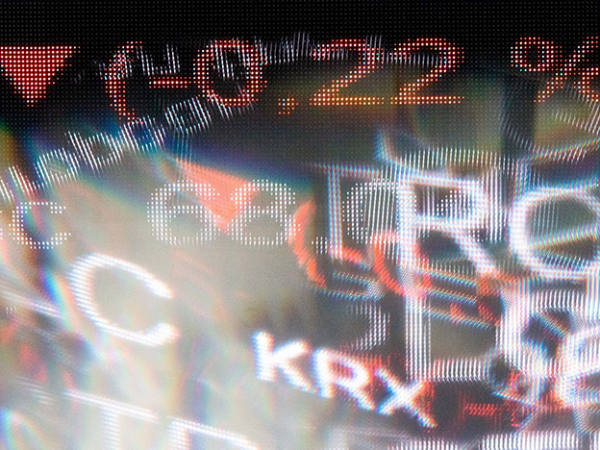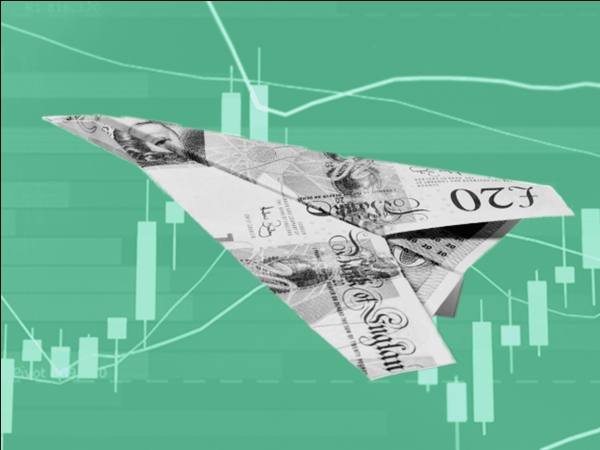Value-flavoured exchange traded funds (ETFs) dramatically outperformed those invested in quality stocks and low volatility stocks for the first time in six years in 2016, signalling a change in investment style for 2017. For the first time since 2009, MSCI All Country World Index Value, which selects stocks with cheap price/earnings (PE) ratios and high-dividend yields, outperformed quality, growth, momentum and low volatility indices.
The shift comes as interest rates, inflation and bond yields all continue to creep upwards and markets embrace higher-risk and cyclical stocks again following years of underperformance. Value weighted was the best-performing of all of MSCI's nine global investment factor indices, which include quality, momentum, size and dividend yield, in December 2016 and for the whole of last year. In sterling MSCI All Country World Index Value returned 10 per cent more in2016 than the momentum index and almost 10 per cent more than MSCI All Country World Index Quality.
Factor investing enables investors to emphasise certain types of stock over others out of a broader index such as MSCI Europe. For the past eight years, low bond yields and interest rates have kept money flowing into the bond-like stocks that tend to populate the MSCI Growth and Quality indices.
Factors considered part of the value style, such as cheap price-to-book ratios, high dividend yields and a low price compared to earnings, have lagged behind.
But last year investors tracking value indices across a wide variety of markets experienced material outperformance against growth indices for the first time since 2009. For example, MSCI IMI World Value, a broad index of global value stocks, marginally outperformed MSCI IMI World Large Growth in 2008, when the value index lost 17.1 per cent against a loss of 19.15 per cent for MSCI Growth index. But since then it has lagged behind during every calendar year
In the US, the shift was even more marked. Donald Trump's victory in the US election has caused a rally in banks and financials stocks, which populate the value index and include companies such as JPMorgan Chase (JPM:NYQ) and Wells Fargo (WFC:NYQ). As a result, MSCI Value made more than double the return of MSCI USA Growth index and MSCI USA Quality index in 2016.
The prospect of better times ahead, in particular for small and medium-sized US stocks, and for a pick-up in earnings, means investors are happier to go bargain hunting and take on more risk with banking stocks and cyclicals. By contrast, the kind of steady income stocks featuring heavily in growth and quality indices have fallen out of favour. It is a departure from the previous five years when investors were nervous about poor growth and earnings, and happy to pay through the nose to hold stocks with a perceived secure income. Those stocks, including names such as Johnson & Johnson (JNJ), Apple (AAPL) and Nestlé (CH:NESN), have been rated up by investors seeking bond-like returns amid a low-yield environment.
And this trend could continue: "Banks are likely to benefit under a Trump administration and with US interest rates on the rise, financials strongly performed (during the last quarter of 2016)," says Michelle McGrade, chief investment officer of TD Direct Investing.
Formerly popular low-volatility indices also tumbled to the bottom of league tables. Low-volatility styles performed well during 2015, but suffered in 2016 as money flowed into stocks perceived as higher risk. Of all MSCI's main nine factor indices, minimum volatility is now the most expensive factor with a forward PE ratio of 18.1 and value is the cheapest with a forward PE of 13.2. The broader market All Country World Index (ACWI) is 15.7.
MSCI ACWI Minimum Volatility index underperformed the broader ACWI All Cap index by 2 per cent in 2016 and so far this is lagging the broader index in 2017 too.
The factors to buy and avoid
According to wealth manager SCM Direct, there was a wide disparity between the factor ETFs that generated substantially more in returns than the broad market and those that underperformed. SCM analysed a sample of 72 sterling denominated smart-beta ETFs listed on the London Stock Exchange in 2016. Low-volatility and quality-focused European equity ETFs were the worst performers in comparison to broad market trackers, but ETFs focused on value and high dividends in the US and emerging markets returned substantially more than ETFs tracking broad market indices.
First Trust United Kingdom AlphaDex UCITS ETF (FKU), which is designed to beat the FTSE 100 by selecting stocks based on growth and value factors, returned 17.3 per cent less than the FTSE 100. Ossiam FTSE 100 Minimum Variance UCITS ETF (UKMV), designed to protect investors from market falls, returned 13.7 per cent less than the FTSE 100. And Lyxor SG European Quality NTR Income UCITS ETF (SGQE) returned 11.8 per cent less and iShares Edge MSCI Europe Minimum Volatility UCITS ETF (IMV) returned 6.3 less than MSCI Europe index.
Minimum volatility ETFs were effective at protecting ETF investors from losses during times of recent turbulence, but tend not to outperform in rising markets. They also tend to be more exposed to the kinds of bond-proxy stock that has outperformed in recent years, but become expensive and less loved by the market than cyclical stocks in recent months.
Alan Miller, founding partner of SCM Direct says: "If you look at the current underlying valuations of the stocks within the iShares Edge MSCI Europe Minimum Volatility UCITS ETF versus the MSCI Europe market cap weighted index, the ETF's portfolio has a higher PE ratio - 16.6 vs 14.9 - but with lower growth (6.7 per cent a year earnings per share (EPS) growth versus 7.9 per cent).
iShares Edge MSCI Europe Minimum Volatility UCITS ETF is also most underweight the sectors that rallied strongly at the end of the year. Like many minimum volatility ETFs, it has a greater bias to utilities than MSCI Europe index (9.1 per cent versus 3.5 per cent) and non-cyclical consumer stocks (37.2 per cent versus 28.3 per cent). And it is underweight energy (2.3 per cent versus 7.7 per cent), industrials (6.9 per cent versus 10.5 per cent) and financials (17.6 per cent versus 21.5 per cent). All of those underweights have cost the factor ETF against the broader benchmark in 2016 and could continue to do so throughout 2017.
However value and dividend-focused emerging market equity ETFs made far greater returns than plain vanilla ETFs tracking the same market. PowerShares FTSE Rafi Emerging Markets UCITS ETF (PSRM), a value-focused ETF that weights stocks according to fundamental factors including sales, cash flow, book value and dividends, generated almost 30 per cent more than an ETF tracking a plain vanilla emerging market index. It is heavily skewed towards financials and energy, with over 50 per cent of assets invested in those sectors, and over one year to 17 January 2017 has returned 94.9 per cent - well ahead of MSCI Emerging Markets index's 52.3 per cent. It has also done well over longer periods, returning 57.1 per cent over five years compared with 34.3 per cent for MSCI Emerging Markets index.
Mr Miller says it remains appealing based on the underlying valuations of the stocks it holds: "When compared to a traditional emerging markets ETF such as iShares Core MSCI Emerging Markets IMI UCITS ETF (EMIM), the PowerShares fund's underlying stocks have a higher dividend yield (3.5 per cent versus 2.8 per cent), lower price to book multiple (1.0x versus 1.4x) and lower PE multiple (10 versus 12.1), but slightly lower growth with forecast earnings growth of 10.4 per cent a year versus 11.3 per cent a year. Purely on these metrics, I would say the underlying stocks still look reasonably valued even after their recent performance," he says.
iShares Asia Pacific Dividend UCITS ETF (IAPD) was also a strong performer in 2016, returning 19.2 per cent more than MSCI Asia Pacific index, while WisdomTree Emerging Markets SmallCap Dividend UCITS ETF (DGSD) returned 17 per cent more than MSCI Emerging Markets Small Cap index. The iShares ETF offers exposure to the 30 highest dividend-paying stocks from developed countries in Asia Pacific and excludes companies with negative dividend growth in the past three years.
But iShares Asia Pacific Dividend UCITS ETF has failed to return more than the broader MSCI Asia Pacific index over five years. "It was interesting to note that the average outperformance of the smart-beta ETFs holding 100 or fewer stocks was 0.4 per cent, while the average outperformance of those holding more than 100 stocks was 2.1 per cent," says Mr Miller.
Mr Miller says that of all the factors, value investing remains appealing for 2017, although it is not as cheap as in 2016. "At the moment the value rally probably still has further to run, but a lot of the undervaluation of many of those stocks was corrected in the last six months of the year," he adds.
Value ETFs include recently launched iShares Edge MSCI USA Value Factor UCITS ETF (IUVL), SPDR MSCI USA Value Weighted UCITS ETF (USVL) and UBS MSCI USA Value UCITS ETF (UC07).
Global value ETFs include db x-trackers MSCI World Value Factor (XDEV) and iShares Edge MSCI World Value Factor (IWFV).
Top 10 smart-beta ETFs versus market cap index over 2016
| ETF | Index | Performance difference between ETF and index (%) |
|---|---|---|
| PowerShares FTSE Rafi Emerging Markets | MSCI Emerging Markets | 29.1 |
| iShares Asia Pacific Dividend | MSCI Asia Pacific | 19.2 |
| WisdomTree Emerging Markets SmallCap Dividend | MSCI Emerging Markets Small Cap | 17.3 |
| WisdomTree Emerging Markets Equity Income | MSCI Emerging Markets | 14.4 |
| PowerShares S&P 500 High Dividend Low Volatility | S&P 500 | 12.3 |
| iShares Euro Dividend | MSCI Europe | 12 |
| iShares Emerging Markets Dividend | MSCI Emerging Markets | 11.8 |
| SPDR S&P US Dividend Aristocrats | S&P 500 | 9.8 |
| Ossiam Shiller Barclays CAPE US Sector Value | S&P 500 | 8.6 |
| SPDR S&P Euro Dividend Aristocrats | MSCI Europe | 8.5 |
Source: SCM Direct, based on 2016 calendar returns in sterling against market cap index
Bottom 10 smart-beta ETFs versus market cap index
| ETF | Index | Performance difference between ETF and index (%) |
|---|---|---|
| FirstTrust United Kingdom AlphaDex | FTSE All-Share | -17.3 |
| Ossiam FTSE 100 Minimum Variance | FTSE 100 | -13.7 |
| Lyxor UCITS ETF SG European Quality | MSCI Europe | -11.8 |
| Lyxor JPMorgan Europe Quality | MSCI Europe | -10.3 |
| iShares UK Dividend | FTSE All-Share | -8.9 |
| SPDR S&P UK Dividend Aristocrats | FTSE All-Share | -8.2 |
| iShares Edge MSCI Min Vol Emerging Markets | NSCI Emerging Markets | -7.9 |
| Source RBIS Equal Risk Equity Europe | MSCI Europe | -7.6 |
| Amundi MSCI Europe Minimum Volatility | MSCI Europe | -7 |
| iShares Edge MSCI Europe Minimum Volatility | MSCI Europe | -6.3 |
Source: SCM Direct, based on 2016 calendar returns in sterling against market cap index
Best-performing MSCI ACWI index factors
| Factor | 2016 return (%) |
|---|---|
| Value weighted | 13.2 |
| High Dividend Yield | 11 |
| Equal Weighted | 9.3 |
| Factor Mix A Series USD | 9.2 |
| Risk Weighted | 8.5 |
| ACWI | 8.5 |
| Minimum Volatility USD | 8.1 |
| Quality | 6.1 |
| Momentum | 4.8 |
Source: MSCI as at 30 December 2016
Factor indices annual returns
| Index | 2017 YTD | 2016 | 2015 | 2014 | 2013 | 2012 | 2011 | 2010 | 2009 |
|---|---|---|---|---|---|---|---|---|---|
| MSCI ACWI Large Growth | 5.2 | 23.3 | 7.5 | 12.3 | 20.6 | 11.8 | -6.4 | 17.2 | 21.5 |
| MSCI ACWI Minimum Volatility | 3.6 | 27.1 | 8.2 | 15.6 | |||||
| MSCI ACWI Momentum | 4.7 | 24.3 | 7.8 | 12.5 | 24.5 | 12.4 | 2.7 | 19.6 | 6.2 |
| MSCI ACWI Quality | 4.2 | 25.9 | 7.4 | 15.0 | 21.0 | 9.9 | 2.3 | 15.0 | 21.1 |
| MSCI ACWI Value Weighted | 4.4 | 34.2 | -0.4 | 7.3 | 21.0 | 11.5 | -9.3 | 15.6 | 23.8 |
Source: FE Analytics, as at 17.01.17










